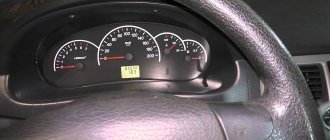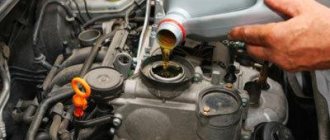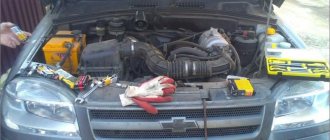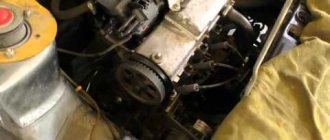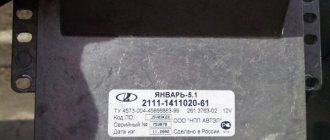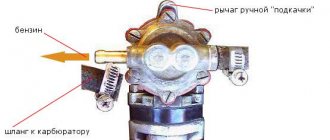Carburetor power units are actually a thing of the past. But many cars on the roads of our country still use this option for supplying fuel to the engine. For many, a carburetor turns out to be a fairly convenient means of replacing an injector, since the car becomes easier to repair and cheaper to operate. In most cases, the owner of a carburetor car can independently carry out basic maintenance work on the fuel supply system. In the case of an injector, this task should only be performed by specialists. For simple carburetor repairs, you do not need special equipment, but to work with an injector, such devices are simply necessary. Therefore, such a part of the engine power system has certain advantages. Interestingly, these advantages force many to change the injector to a carburetor, which is not difficult at all.
Problems that arise with the carburetor can be very different. One of the common problems is that the engine stops working after the car has completely warmed up. The driver has to increase the speed with the help of a choke, but this trick will not work on carburetors with auto-choke. Eventually, the engine will stall as soon as you release the gas pedal. At every traffic light, intersection and pedestrian crossing, the driver begins to curse fate, red lights and innocent pedestrians, and the carburetor continues to stall and refuses to work normally, despite very expensive gasoline. Let's figure out the nature of this trouble.
The VAZ does not start well when cold. What to do?
Long-term and intensive use of the car leads to the accumulation of faults that can cause problems with starting the engine. Often, the power unit of the carburetor model VAZ 2107 starts poorly or does not turn on at all in the morning or after a long stay. The cooling time of the oil to ambient temperature in summer is about six hours.
At the end of this period, to start the VAZ 2107 engine, you need to close the air damper in the carburetor by pulling the choke all the way. If it does not start, as drivers usually say when it is cold, the cause of this phenomenon should be determined and eliminated. To do this, it is necessary to carefully examine the power unit and carry out a number of measures aimed at putting the components and mechanisms in order.
Does the starter turn?
First you need to check the voltage in the car's on-board network. To start the machine normally, this indicator should not be lower than 12.5 V. To accurately measure the voltage, you must use a voltmeter.
A starter is a mechanism that requires a large starting current. It is this unit that turns the crankshaft for starting. Therefore, if the VAZ-2107 (injector) does not start, the reasons may be trivial - low battery voltage. The solution is to charge the battery. You should stick to 12.5-14 Volts.
Reasons for improper operation of an injection engine
There may be several reasons why an injection engine does not start well when cold. The main one is sensor malfunction. If one of the modules breaks down, the electronic control unit receives incorrect data, causing the engine to start poorly and run intermittently.
Common causes of poor starting of an injection engine.
Air leak
Occurs when there is a leak in parts of the air supply system. The mass flow sensor cannot catch some of the air entering the engine, which is why a lean mixture is supplied to the combustion chamber. This leads to unstable idling and a problem with cold starting of an injection engine.
During warm-up or choke operation, this problem is almost unnoticeable, but when the engine warms up to operating temperature, interruptions in idling become more noticeable.
Air leaks can occur for the following reasons:
- violation of the sealed connection in the vacuum booster;
- mechanical damage to the fasteners and air supply hose to the intake manifold, pressure regulator pipelines and crankcase ventilation system;
- Damage to the gaskets between the cylinder block and the intake manifold.
The cause of air leaks can be determined by visual inspection. If the malfunction significantly affects the idle operation and starting of a cold injection engine, before repairs are performed, you can increase the speed by disconnecting the plug from the mass flow sensor. This action will lead to a significant increase in fuel consumption, so it is not recommended to delay repairs.
Main indicators of the fuel and air mixture
| Fuel mass, kg. | Air mass, kg | Excess air ratio | Blend names | Burning rate | Engine power | Mode of application |
| >1:6 | 1,36 | The mixture is not flammable |
Mass flow sensor malfunction
Incorrect operation or breakdown of the sensor leads to an immediate stop of the motor after starting. When this happens, you need to disconnect the sensor and start the car again. If the engine runs without interruption, then the flow sensor needs to be replaced.
Temperature sensor faulty
When the central control unit does not receive signals from the coolant temperature module, it takes the value zero. The built-in program prepares the working mixture according to this temperature, which leads to the following consequences:
- injector engine does not start well when cold;
- detonation at low speeds.
The module cannot be repaired, so the faulty part is replaced with a new one.
Ignition faulty
The problem can be corrected by setting the timing of the spark, adjusting the position of the timing belt and replacing damaged parts.
Table of indicators of temperature sensor resistance versus coolant temperature.
HBO for cars
A hot engine can also cause a breakdown in the case of an installed gas system. Since driving on gas has recently become profitable, many drivers switched to this type of fuel, however, they did not take into account some of the nuances of the new system. In hot weather, gas expands more, which leads to increased pressure inside the system and often causes damage. This is why it is bad to drive on gas in the heat.
The result is an extremely dangerous situation. To avoid this, try not to fill the tank to full gas in the summer, this will reduce the pressure in the system and the risk of breakdown. If a similar problem occurs, it is recommended to let the car cool down and then visit a service station. You should not repair the gas system yourself; the equipment should be adjusted by a specialist.
Doesn't Start When Hot - TOP 3 Causes of Poor Engine Starting
With the arrival of hot days, more and more drivers are faced with the problem of poor engine starting when hot, after several minutes of parking. Moreover, this is a problem not only for carburetor engines - a situation where it does not start when hot can await both owners of cars with injection engines and diesel cars. Only the reasons are different for everyone. Here we will try to collect them and identify the most common ones.
When a hot carburetor engine does not start
Why is it difficult to start when hot and what to do?
The reasons why the carburetor does not start well when hot are more or less clear; the volatility of gasoline is mainly to blame. The bottom line is that when the engine warms up to operating temperature, the carburetor also heats up, and after turning it off, within 10-15 minutes, the fuel begins to evaporate, making it difficult to start the car.
Installing a textolite spacer can help here, but it does not give 100% results.
In such a situation, pressing the gas pedal to the floor and purging the fuel system will help to start a hot engine, but not longer than 10-15 seconds, since fuel can flood the spark plugs. If the question concerns the Zhiguli, then the fuel pump may also be to blame, since Zhiguli gasoline pumps really do not like heat and sometimes completely refuse to work when overheated.
When an injection engine does not start
Since an injection engine is somewhat more complex than a carburetor engine, there will be more reasons why such an engine will not start. In particular, they may be malfunctions of the following components and mechanisms:
- Coolant temperature sensor. In hot weather, it may fail and supply incorrect information to the ECU, in particular, that the coolant temperature is higher than normal.
- Crankshaft position sensor (CPS). Its failure will lead to incorrect operation of the ECU, which in turn will not allow the engine to start.
- Mass air flow sensor (MAF). In hot weather, the sensor may not cope with the tasks assigned to it, since the temperature difference between the incoming and outgoing air masses will be insignificant. In addition, there is always the possibility of its partial or complete failure.
Next, let's move on to considering the possible reasons for poor hot starting in cars with diesel engines.
When a hot diesel engine has trouble starting
Unfortunately, diesel engines can also sometimes fail to start when hot. Most often, the causes of this phenomenon are malfunctions of the following components:
- Coolant sensor. Here the situation is similar to that described in the previous section. The sensor may fail and, accordingly, transmit incorrect information to the ECU.
- Crankshaft position sensor. The situation is similar to an injection engine.
- Mass air flow sensor. Likewise.
- High pressure fuel pump. In particular, this can happen due to significant wear of the bushings and oil seal of the pump drive shaft. Air enters the pump from under the seal, making it impossible to build up operating pressure in the pre-plunger chamber.
- Diesel engine idle system.
- Fuel pressure control.
- Ignition module.
Why is it dangerous to turn the starter for a long time when starting the engine?
Starting an engine is a process in which the starter and battery are directly involved. They are the ones who suffer the most when starting the engine for a long time. Accordingly, the following problems are possible:
- Low battery. Each time you try to start the engine, battery power is consumed. Moreover, if the attempt is not successful, then we can assume that the battery is consuming its charge “idle”. In order for the battery to charge, the engine must start and run for a while. Several unsuccessful attempts to start the engine, and you will get a discharged battery, which will need to be charged from the station, or you can start the engine “by lighting” in other cars;
- Starter failure. When the starter is cranked for a long time, it begins to overheat, which can negatively affect its components and lead to complete failure of the part. Also, do not forget about the bendix, which when trying to start the engine is connected to the crankshaft. If the engine does not start, there is a high risk of damage to the splines on the bendix or the bearing. If you constantly have to turn the starter for a long time when starting the engine, over time this will lead to its failure and the need for replacement.
Most often, you can solve the problem with the starter cranking for a long time when starting the engine without contacting a service center yourself, thereby preventing early failure of the starter.
Why is the VAZ 2114 8-valve injector difficult to start?
For some reason, it seems that many drivers of this model will be interested in the question of why the VAZ 2114 8-valve injector does not start well. Finding the cause of this phenomenon is not as easy as it might seem at first. This is due to certain difficulties in troubleshooting in this model, since injection systems differ from carburetor systems. The algorithm for identifying possible problems will be built differently, adapting to the design features of the machine. Why is the VAZ 2114 8-valve injector difficult to start?
, we will try to consider in this work. In a short article it is impossible to consider absolutely all possible problems; there are some that can only be identified with the help of diagnostic equipment. But, nevertheless, we will try to analyze as many such situations as possible in order to help all VAZ 2114 owners decide what to do in such a situation.
Why might the engine be difficult to start?
You can look for the culprit in such a situation in several directions. Among them, the most important problems are:
- Malfunctions in the ignition of a VAZ 2114 car
- There is no pressure in the fuel rail of the 8-cl VAZ engine
- Air leak into the VAZ intake manifold
- Timing belt marks are misaligned
Engine diagnostics using spark plugs
Let's look at the first option, why the VAZ 2114 doesn't start well. To do this, unscrew the candles and look at their color. If there is black dry carbon on the candles, we can say that the engine has been running for a long time on a rich mixture, which covers the candles with black carbon.
Why does black carbon appear on the spark plugs of an injection car:
- Malfunction of the mass air flow sensor
- The first oxygen sensor has failed
- Fuel pressure regulator is faulty
- Malfunction of fuel injectors
White carbon deposits on the spark plugs of an injection car appear due to a lean mixture, the reasons for the appearance:
- Everything is the same as with black soot
- Malfunction of the fuel pump or clogged fuel filter (check the mesh and fine filter)
- Air leaks through the air flow sensor pipe, the place where the regulator is attached to the XX joints of the manifold.
Checking the spark plug spark
The lack of a spark on one 8-cl spark plug of a VAZ engine will not affect the engine starting, it will be noticeable when idling, tripping and jumping revs. But if the ignition module of the VAZ 2114 is faulty, then the spark disappears in two cylinders 1-4 or 2-3. To check the spark plug spark, take out the fuel pump fuse, unscrew one spark plug or take a spare one, remove the high-voltage wires one by one, put them on the spark plug, then put the whole thing on ground (in this case, the valve cover) and ask a friend to crank the engine with the starter, so we check each spark plug. If there is no spark on one spark plug, most likely there is a defect in the explosive wires; if there is a spark in two or all spark plugs, it is highly likely that the problem is in the ignition module or the wiring to it.
The timing marks on the VAZ are not set correctly
Another reason why the VAZ 2114 does not start may be a mismatch of the timing marks. The reason for the mismatch of the marks may be weak timing belt tension, cut teeth, or the crooked hands of a mechanic at a service station.
A discrepancy of more than two teeth will noticeably affect the operation of the engine of the fourteenth. With a slight deviation, the engine starts up a little worse, does not hold idle, and stalls when switching to neutral gear. If the deviation exceeds 4-5 teeth, the sound of the engine changes, air escaping under pressure through the valves that are not opened in time becomes audible, thrust noticeably disappears, and starting the engine is extremely problematic.
- To check, we need a “10” key; use it to unscrew the three bolts securing the timing case.
- Next, put the car in 5th gear and push it until the mark on the camshaft pulley and the rear cover match, you can also turn the pulley with the key to “17”
- We remove the protective plug from the clutch housing and see if the mark on the flywheel matches the mark; if not, then you need to loosen the tension roller and align the belt according to the marks.
Checking the crankshaft sensor VAZ 2114
Perhaps this is the only sensor without which a VAZ car will not be able to start at all. If, when the engine is cranked with the starter and the ignition and fuel supply are working properly, there is no seizure or ignition of the fuel, then the problem is in the DPKV. The cost of the sensor does not exceed 300 rubles; it is better to replace it. However, there is a way to check: checking the crankshaft sensor video
If after the performed operations it was not possible to determine the breakdown, please write your problem in the comments, I will be happy to answer your question!
Troubleshooting
Troubleshooting in the ignition system of the VAZ “Six” should be carried out using the method of elimination, checking element by element sequentially. This is worth dwelling on in more detail.
Battery check
Since when starting a car, the power source is the battery, it is by checking this device that diagnostics should begin. Malfunctions with the battery appear when you try to start the engine. At this moment, the indicator lights on the instrument panel go out. The reason could be either poor contact on the terminals themselves, or simply a weak battery charge. Therefore, the condition of the terminals should be checked and, if you need to clean them, tighten the fastening. To prevent future oxidation, it is recommended to cover the contacts with a graphite coating. If the battery is discharged, it is charged using an appropriate device.
Spark plug wires
The next elements that require mandatory checking in case of problems with sparking are explosive wires. Upon external inspection, the cables should not show any damage (cracks, breaks, etc.). To assess whether a spark passes through the wire or not, you will need to remove the tip from the spark plug and place it near a ground (5–8 mm), for example, near the engine block, and crank the starter for a few seconds.
At this time, a powerful spark should jump. The absence of one will indicate the need to check the high-voltage coil. Since it is impossible to determine by ear which of the cylinders does not spark, the test should be performed one by one with all wires.
Video: diagnostics of explosive wires with a multimeter
Spark plug
Spark plugs, although infrequently, still fail. If a malfunction occurs, it is with one element, and not with all of them at once. If a spark is present on the spark plug wires, then to check the spark plugs themselves, they are unscrewed from the cylinder head of the “six” and an explosive cable is put on. The metal body of the spark plug touches the masses and turns the starter. If the spark plug element is working, then a spark will jump between the electrodes. However, it may also be absent from a working spark plug when the electrodes are filled with fuel.
In this case, the part needs to be dried, for example, on a gas stove or installed another one. In addition, it is recommended to check the gap between the electrodes with a feeler gauge. For a contact ignition system it should be 0.5–0.6 mm, for a contactless ignition system it should be 0.7–08 mm.
Ignition coil
To test the high-voltage coil, you need to remove the central cable from the distributor cover. By cranking the starter, we check for the presence of a spark in the same way as with the explosive wires. If there is a spark, then the coil is working and the problem should be looked for elsewhere. If there is no spark, the problem is possible both with the coil itself and with the low-voltage circuit. To diagnose the device in question, you can use a multimeter. For this:
- We connect the probes of the device, switched on to the resistance measurement limit, to the primary winding (to threaded contacts). If the coil is working properly, the resistance should be about 3–4 ohms. If the values deviate from the norm, this indicates a faulty part and the need to replace it.
Low voltage circuit
The high potential on the ignition coil is formed as a result of applying a low voltage to its primary winding. To check the functionality of the low voltage circuit, you can use a tester (light bulb). We connect it to the low voltage terminal of the distributor and ground. If the circuit is working, then the lamp, when the ignition is on, should light up when the distributor contacts open and go out when they close. If there is no glow at all, then this indicates a malfunction of the coil or conductors in the primary circuit. When the lamp lights up, regardless of the position of the contacts, the problem may be the following:
- damage to the conductor that goes from the distributor terminal to the lever. Eliminated by restoring damaged wiring;
- break in the conductor running from the movable disk to the housing. The malfunction can be treated as in the previous paragraph;
- oxide formation on contacts. In this case, cleaning and adjustment of the elements is required.
Fuel pump problem
The fuel pump in a car does not have special cooling. It is located in the tank and is cooled by gasoline, and if there is little gasoline in the tank, the pump may overheat. Therefore, it is not recommended to drive while the “Refueling” light is on. Also, in hot weather, the gasoline in the tank heats up, as does the fuel pump during operation. All together, this leads to the fact that during the process of pumping gasoline, the pump gets very hot and refuses to start until it cools down. In this case, the pump may refuse to work even while driving: it simply stalls. If the engine does not start well when hot due to the pump, then the experts recommend:
- Replace it. This is a simple and correct solution. The cost of the pump is small - about 1000 rubles. You will also have to pay 500 rubles to replace it.
- Allow the pump to cool and try to start the engine again.
Gasoline units
As you know, electronic injection includes a large number of components, no less important than injectors, for example. A malfunction of any of them will easily lead to the fact that the engine will be difficult to start when hot.
The most common causes of difficult engine starting include:
- RTD is a sensor that regulates the fuel pressure before it is supplied to the injectors;
- Crankshaft position sensor. It tends to become clogged and “glitchy”. Then an incorrect signal is sent to the ECU. Crankshaft position sensor https://carnovato.ru/wp-content/uploads/2012/05/kolenval_datchik_polozhenija_kolenchatogo_vala-1.jpg
- Injectors. The tightness is broken, which ultimately leads to gasoline leakage, the fuel assembly is enriched, and the spark plugs are flooded. Starting a hot engine eventually becomes extremely difficult.
- If the DTOZh fails, then an incorrect signal is sent to the on-board computer, as a result of which the fuel supply that is optimal for starting the engine is disrupted.
- If the mass air flow sensor fails due to clogging or malfunction, the same thing happens. The information sent to the ECU is false.
- Fuel pump.
- Injection pump.
- Ignition coil.
- Armored wires that conduct electric current to the spark plugs. The latter must ignite the combustible mixture on gasoline units. If there are current leaks due to poor-quality armor wiring, the spark plugs will not have enough energy to spark.
All faults with sensors are usually detected using special diagnostic equipment. A regular multimeter that measures the resistance of electronic devices will do.
Carburetor car engine starts and stalls
Symptoms of a problem
There is no fuel in the float chamber
Pump it up using the manual pump lever on the fuel pump.
The fuel pump or power system may be faulty. Remove the hose from the carburetor fuel supply fitting and press the manual primer lever on the fuel pump several times. A strong pulsating stream of gasoline should come out of the hose hole. If it is missing or weak, check the fuel pump or power system.
The strainer at the carburetor inlet is clogged
Remove it by unscrewing the cap, clean it (you can use a toothbrush), rinse with acetone or gasoline and blow with compressed air. At the same time, clean the filter seat in the carburetor cover.
The solenoid valve is faulty or the fuel jet of the idle system is clogged
Check whether the solenoid valve or the idle air system fuel nozzle holder has become loose due to any circumstances. Turn it on. Remove the wire from the valve and then put it back on. You should hear the click of the valve being activated. If it is not there, we connect a piece of wire plus the battery and the valve outlet. There is no click - we change the valve. There is a click - we check the EPH system.
Check the serviceability of the valve itself by unscrewing it from the carburetor and removing the fuel jet from it. The jet should be carefully inspected for contamination and deformation. We also check the ease of movement of the valve shut-off needle, the presence and integrity of the rubber O-ring on the valve body.
Unscrew the idle air system fuel nozzle holder (on carburetors with a holder instead of a solenoid valve), rinse, clean the fuel nozzle and blow with compressed air.
“Suction” of foreign air into the carburetor
In this case, the fuel mixture is lean. If the engine starts and immediately stalls, it is most likely very lean. The image shows probable places where foreign air is “sucked in” on the 2108 Solex carburetor.
Read more about the “suction” of foreign air in the article “Suction of foreign air into the carburetor.”
Disassemble the starter housing and replace the diaphragm with a new one. Adjust the starting device.
It is necessary to remove the carburetor cover, unscrew the jets, remove the tubes, rinse and clean them, clean the wells, blow everything out with compressed air and put it back. The image shows what should be cleaned on the carburetor 2105, 2107 Ozone.
On the Solex carburetor, unscrew the air jets and take them out along with the emulsion tubes. At the bottom of the opened wells there are fuel jets. We turn them out with a thin long slotted screwdriver. Clean, rinse with acetone and blow with compressed air.
Fuel and air jets and idle system channels are clogged
Unscrew the jets, rinse and clean them, and blow them with compressed air.
You can try to clean the idle system without disassembling the carburetor. Here is an article on this topic “Cleaning the idle system of the carburetor 2108, 21081, 21083 Solex.”
The fuel level in the carburetor float chamber is broken
The fuel mixture is either very lean or very rich due to incorrect adjustment.
Articles on the site about adjusting the fuel level:
The carburetor air damper drive is not adjusted (“choke”)
A not fully open air damper causes the fuel mixture to become richer in some cases to such an extent that it is difficult to start the engine, especially when it is hot. The spark plugs may become flooded with fuel. Adjust the drive:
With the choke handle fully extended, the air damper should completely cover the cross-section of the first chamber of the carburetor.
With the handle fully recessed, the air damper should be strictly vertical.
Notes and additions
— Before searching for the reasons that a carburetor engine starts and stalls, it is recommended to check the serviceability of the ignition system, since the symptoms of its malfunction are similar to the symptoms of a malfunction of the ignition system and the presence of fuel supply through the power system.
TWOKARBURATORS VK -More information on this topic in our VKontakte group TWOKARBURATORS DZ -and in Yandex Zen
Hot engine stops
This is another very unpleasant moment. It is especially typical for the domestic automobile industry of older model years. If the engine suddenly overheats, it suddenly just stops. This often happens in hot summers.
Among the popular reasons is a gas lock in the fuel pump. These plugs prevent the pump from functioning normally and the float chamber is dry. The combustible mixture simply does not get there. In this case, only cooling the pump will help. It is watered with water.
You should be careful with these devices. The pump housing may contain glass parts.
Causes of failure related to injector sensors.
Crankshaft sensor (crankshaft sensor).
If this sensor completely fails, the car most likely will not even start. Crankshaft sensor failure is a fairly rare malfunction, but it does occur. The sensor may give incorrect readings if it is not tightly screwed to the motor housing. Vibration can cause it to change its position in the seat, which is extremely unacceptable. As the distance between the sensor and the drive disk (notches on which the sensor is triggered) increases, engine malfunctions begin. An indirect sign of the need to check the crankshaft sensor is the absence of ignition. It is the pulses from the crankshaft sensor that the ECU uses to calculate the timing of the spark and fuel injection. This means that there may be no spark not only due to a malfunction of the ignition system, but also due to a failure of the crankshaft sensor.
Crankshaft sensor
Camshaft position sensor.
The second reason for the malfunction of the injection motor. If it malfunctions or if an injector breaks down, the engine switches to an asynchronous mixture supply mode. This means that the mixture is injected into the cylinders regardless of the position and stroke of the piston. In such cases, fuel consumption usually increases and the Check Engine light comes on.
Camshaft position sensor
Coolant temperature sensor DTOZH.
The Check Engine light will come on in this case either if the sensor wire is broken or if there is a short circuit. this sensor. If the sensor lies too much and shows the wrong temperature, then the car may not start at all, and the reason is simple.
Imagine that the true engine temperature is +20°C, and the sensor shows -20°C. What happens in this case? The ECU gives a command to inject more fuel, thinking that the engine is cold. As a result, the cylinders are overfilled with fuel and the engine simply choke on gasoline. Even if the car starts, with a faulty temperature sensor there will be increased fuel consumption.
Coolant temperature sensor DTOZH
Please note that a vehicle may have two or more coolant temperature sensors installed. One of them gives readings to the ECU, the second – to the dashboard (in some cars the panel takes readings from the ECU). Carefully study which sensor is in your car, where it is located and what each of them is responsible for.
Oxygen sensor (lambda probe).
If the oxygen sensor breaks down, there will be increased fuel consumption and interruptions in engine operation may occur. The sensor most often continues to work, but its readings differ from the real ones. As a result, the consumption and overall dynamics of the car deteriorate. Interruptions in engine operation may occur. In most cases, an error code is entered into the ECU memory, and a lamp lights up indicating an injector malfunction - Check Engine.
Oxygen sensor (lambda probe)
Mass air flow sensor - mass air flow sensor.
Does the car run intermittently, does the engine start poorly, does it stall while driving or when you release the gas pedal? All these reasons can cause a malfunction of the air flow sensor. If the engine does not start as usual, but only starts when the gas pedal is pressed, then the reason may be the mass air flow sensor. This sensor shows how much air is entering the engine. The ECU, in turn, based on the readings, calculates how much fuel needs to be supplied to the cylinders.
Mass air flow sensor - mass air flow sensor
If the sensor is working properly, then you should check the air leakage after it. Since in this case the real amount of air will differ from the measured one. In general, air leaks are one of the most common problems for an injector. THIS article describes in detail how to easily find and fix air leaks yourself.
Throttle position sensor - TPS.
If the car is “not responsive” to the gas pedal, the speed floats or changes spontaneously, or the idle is unstable, then the cause of the malfunction may be the TPS. The car may not even start if the TPS gives incorrect readings.
Throttle position sensor - TPS
Imagine that you start the engine without pressing the gas pedal, as expected, and the sensor shows the ECU that the pedal is pressed halfway. Of course, the ECU increases the amount of fuel injected, believing that you have pressed the pedal and need to step on the gas. As a result, the cylinders are flooded, the car stalls, or does not start at all. In this case, the Check Engine light may not light up, because the sensor is working, it just gives incorrect readings.
Bad fuel as a possible problem
When you fill up with low-quality gasoline or diesel fuel, you shouldn’t be surprised why the engine doesn’t start well when it’s hot. Fuel is the most common cause of poor engine starting. This is easy to check. Just remove all the fuel and fill it with new, better quality. If you previously refueled with A92 gasoline, then you can try filling it with A98 and see how the car behaves. In the case of diesel fuel, you need to change the gas station and choose a more reliable seller.
The following problems may occur with the motor:
- There is a high content of additives in the fuel, which are poorly accepted by the engine.
- It is difficult for the pump to pump the required volume of fuel due to clogged filters.
- Engine control settings are lost. Inaccurate operation of the air mixture supply is also possible.
- The idle air valve and mass air flow sensor may be the culprit.
- Features of the operation of carburetor engines. If they are too hot, they have trouble starting.
The last point does not apply to injection engines. It’s just that carburetor engines have such a feature that they don’t start well when hot. This is due to the fact that the carburetor heats up to a very high temperature. Gasoline evaporates under the influence of temperature and fills the carburetor chambers and tubes as gas. In this case, the float chamber remains empty. And if you start the engine 5 minutes after stopping the engine, you may encounter a problem starting it, because... there will be no liquid fuel in the combustion chambers. This is normal, and this problem can be solved either by manually pumping fuel or by several attempts to start the engine. In injection power plants, this problem is eliminated, because there the fuel is delivered to the combustion chambers directly from the main line.
Prevention of injector breakdowns
Why the injection engine does not start and how to eliminate possible problems is now known to all readers of our resource
However, it is better to avoid such breakdowns, so let’s pay attention to ordinary procedures that, if carried out systematically, will help minimize the risks of all malfunctions. The simplest but most effective prevention consists of the following measures:
- Firstly, refuel exclusively at proven gas stations and only with high-quality fuel. Remember that most fuel system and engine malfunctions are caused by dirty gasoline;
- Secondly, change all consumables on time and only with high-quality products. The most important thing is periodic replacement of all kinds of filters and engine oil;
- Thirdly, periodically check the main components of the machine for stability. The list of the latter, naturally, includes the injector, elements of the fuel system, ignition and engine;
- Fourthly, never neglect routine diagnostics of your car at a service station. Surprisingly, even a delay of a couple of hundred kilometers can cause serious damage, which previously could have been eliminated with very simple actions;
- And fifth, always operate your vehicle properly. That is, you do not need to overheat, overload or negatively impact your car in any other way.
Perhaps this is where the most important information on today’s issue has come to an end. We hope the material presented above was useful and provided answers to your questions. Good luck in operating and maintaining your car!
Carburetor repair by specialists is the best solution
If you have a carbureted car, it would be best to find a professional who can service the equipment regularly. Your car will require high-quality maintenance on a regular basis, since the carburetor is constantly becoming clogged and presents more and more problems in operation. Therefore, it would be best to use the services of a specialist who knows his business very well and performs cleaning, regular maintenance and repair of carburetors, as well as all related equipment. The main criteria for choosing a specialist are as follows:
- experience in working with your car model, sufficient professionalism, confirmed by years of work;
- positive reviews from other owners of carburetor cars who received quality service;
- affordable prices - you don’t have to choose an expensive service station, you can cooperate with a private master;
- fairly quick completion of all necessary repair work, but the presence of a guarantee of the quality of the result;
- the possibility of ordering complex work with the purchase of spare parts performed by a specialist in order to relieve oneself of responsibility for the quality of parts;
- other convenient services, as well as the possibility of full vehicle maintenance.
It is convenient when all repairs and maintenance are carried out by one person. This makes it quite easy to get a high-quality working car, since one person or one company is responsible for it. If one person repairs your carburetor, another person maintains the car, and a third person solves problems with the generator, all this is not very convenient for repair work on the car. So it’s better to find a universal specialist and constantly service the car exclusively from him. If you have a Solex carburetor installed on your car, we suggest watching a video about its disassembly and maintenance:
Preparatory activities
If the VAZ 2107 carburetor does not function well and does not start after heating, then it is worth checking the car for malfunctions.
Technical inspection consists of several points:
- It is necessary to check the fluid level in the engine mechanisms.
- External surfaces should be checked for oil, antifreeze or fuel leaks. Carefully inspect the live wires connected to the spark plugs. The contacts must be free of any burns.
- If the car sits for a long time without moving, then some of the gasoline evaporates. To restore the level, you need to pump it up with a hand pump.
The next step is to turn on the engine. The driver sits behind the wheel and depresses the clutch pedal when the starter is turned on. If it spins more than 10 times and the engine does not start, then you should check for breakdown of the car’s mechanisms.
Let's sum it up
You should know that if you eliminate all the problems on the engine in cold weather listed above, then there is a high probability of “curing” the car. First of all, it is necessary to check the carburetor, which most often gets clogged among all units, and then inspect other systems responsible for a reliable and safe start.
It is important to pay attention to all the reasons every time. Even if they do not give reason to think about car breakdown. If diagnostics and subsequent repairs are started immediately, minor problems may occur. In other cases, there is a high probability of losing a sufficient amount of time to correct inoperative mechanisms. What about if the car suddenly stops starting at low temperatures. This cannot be avoided, no matter how much car enthusiasts want to. The most common problem is a low battery. However, even in this case it may break. Therefore, it is necessary to monitor all mechanisms and assemblies.
